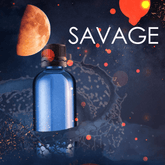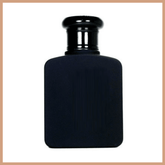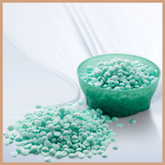How To Make Face And Body Mists Using Hydrosols, Hydrolats, And Infusions
Learn all about hydrolats and hydrosols so you can become a DIY skincare pro.
Are you experiencing dry, sensitive, or simply tired skin on your face or body? If you’ve ticked off all the boxes with your cleansing and moisturizing steps, you may be missing one simple-yet-mighty step...a spray. We’ve been thinking about hydrating sprays lately, as our collection of hydrolats, hydrosols, and oil infusions have inspired us.
If you’re less familiar with hydrolats/hydrosols, plant waters, and oil infusions, you’ve landed at the right spot. Today, we’re discussing these gentle wonders along with some tips for creating your own face and body sprays at home.

What are hydrosols and hydrolats?
To keep things relatively simple, hydrosols and hydrolats are basically the same thing. Now, a scientist may baulk at that as it is slightly more complex, but for DIY skin care makers like us, it’s completely reasonable.
Essentially, hydrosols/lats are the by-product of the distillation process when making essential oils. The distillation process is really rather fascinating and worth reading about (beware of a distillation research rabbit-hole, however!).
The short version is this: plant matter is put in a container. Hot steam is then pushed through this plant-filled container, taking the aromatic compounds and nutrients with it. This aroma and nutrient-filled steam then flows into a receptacle where it then returns to water and oil. The oil floats on top, leaving the leftover water (hydrolat/hydrosol) left. The oil contains most of the strong aromas and many nutrients, but the water is also a powerhouse in its own right.
These water-based solutions contain tiny amounts of essential oils and other beneficial nutrients (hydrophilic particles). While essential oils are hailed as the natural heroes of the aromatherapy world, hydrolats/hydrosols are not to be forgotten. They are far milder and gentler than oils as they are mainly water, and carry nutrients that are only found in water (hydrophilic). The gentle yet helpful nature of hydrosols/hydrolats make them perfect for sensitive or young skin.
Benefits of hydrolats, hydrosols, and plant waters
●They are ultra gentle, even for sensitive skin
●They are already very diluted so can be used as-is
●They contain hydrophilic compounds that are highly nutritious and beneficial for the skin
●They are hydrating and won’t disrupt the skin’s pH levels
●They are easy to use and combine with other skin-loving naturals such as essential oils
What can I use hydrosols and hydrolats for?
●A gentle cleansing water to use post-makeup-remover to help clear pores
●An antibacterial and/or softening toner to use before moisturizer
●A facial spray to soften and refresh the skin during the day
●An ultra-gentle topical treatment for skin issues such as acne, rashes, dryness, and sunburn

What are oil infusions?
Infused oils are a little simpler to explain, but are a stalwart of the herbalist and aromatherapist’s kit. An oil infusion is simply when a plant is infused in a carrier oil. All the lovely scents and beneficial constituents from the plants are released into the carrier oil. Some oils are double-infused (where the process is done two or three times, consecutively) or are infused with a combination of plant matter.
The carrier oil itself offers incredible benefits to the skin (depending on the chosen oil), doubling the value of these gentle-yet-powerful infusions. For example, sunflower oil is a commonly used carrier oil for herbal infusions, and for good reason. It is non-comedogenic (meaning it won’t clog pores), contains antioxidants, and anti-inflammatory fatty acids that offer moisture and healing properties.
The uses and benefits of infused oils are many, for example:
●A nourishing and hydrating oil for the face and body
●A topical treatment to aid the fading of scars and pigmentation
●An anti-bacterial and anti-inflammatory moisturizer for irritated skin
●A post-sun treatment
●A non-comedogenic moisturizer for acne-prone skin (depending on the carrier oil used)
●An anti-aging eye treatment to plump and reduce fine lines
How to make a gentle facial mist
A few tips:
●An opaque bottle is best as it stops light from compromising the properties of your waters and oils.
●Do a patch test on an inconspicuous piece of skin before going all-out with your sprays (unless you’re 100% sure the ingredients are safe for you)
For a relaxing spritz before bed
Lavender is the boss when it comes to calming, soothing, and preparing for sleep. What’s more, lavender can also help to reduce acne thanks to its antibacterial properties, while keeping pH intact.
Harness the multiple benefits of this fragrant flower by making a facial spritz using Lavender Organic Water. You could use the water alone, or bolster the effects by adding a few drops of lavender essential oil and a hydrating oil such as rosehip or jojoba. Of course, water and oil aren’t friends, so it pays to give the bottle a hefty shake before spritzing.
For a soothing spray for all-day use
To give your skin (and makeup) a refresher during the day, pop rosewater in an opaque bottle and carry it with you. Rose water offers so many benefits while being extremely gentle for all skin types, (even very sensitive ones). For one, it has lots of antioxidants that help to prevent signs of aging, and antibacterial properties to fend off acne and breakouts. However, one of the loveliest properties of rosewater is its ability to soften and soothe dry, irritated skin. And lastly, it smells simply heavenly.
Mix rosewater with a few drops of rose essential oil and spritz as often as you need to.
For hydrating and calming sensitive skin
Those with sensitive skin prone to painful flare-ups and inflammation know the difficulty of caring for such issues. It can be extremely hard to find products that are as sensitive as they say on the bottle, while being effective at the same time. One of the best natural ingredients for sensitive skin is chamomile, known mostly for its use as a calming tea. However, topical application of chamomile (especially in the form of water) is extremely beneficial as it calms, soothes, and reduces inflammation. What’s more, it offers antioxidant, anti-bacterial, and anti-fungal properties to keep the skin cleansed and clear.
Mix with geranium or lavender essential oils to create a soothing, balancing facial spray you can use as often as you need.
Tip: remember, just because a particular plant is soothing and anti-inflammatory for most people, it isn’t guaranteed not to irritate others.
How to make a hydrating body mist
For pain relief
St. John’s Wort is best-known for its ability to ease, and at times, even treat depression as well as antidepressant medications. However, it is also great at easing pain related to sunburn, bruising, eczema, wounds, and muscle aches when applied topically. As well as easing pain, St. John’s Wort can help with healing as it has antibacterial properties to reduce the risk of infections.
To help with muscle aches and pains, combine St. John’s Wort oil infusion with a few drops of chamomile and lavender essential oils for extra calming effect. Mix in a spray bottle, shaking before use. Spray onto the skin and rub into the skin thoroughly before dressing.
Tip: if you find oil sprays to be a little messy, you could combine the oil with shea butter, coconut oil, and cocoa butter to create a densely hydrating and nourishing body butter.
For a lovely scent, calming effect, and hydration
Vanilla infusion in sunflower oil offers the warming, mind-calming scent of vanilla with the non-comedogenic, hydrating properties of sunflower oil (not to mention all those fatty acids and vitamins!). For a hydrating oil spray with a scent to die for, combine our vanilla-infused oil with a few drops of rose essential oil and jojoba oil to add further hydration, anti-aging, and softening abilities.









2 Comments
I was looking at the face body sprays they sound amazing, how much of essential oil to other product ingredients would you recommend?
I was looking at the face body sprays they sound amazing, how much of essential oil to other product ingredients would you recommend?
Leave a comment
All blog comments are checked prior to publishing